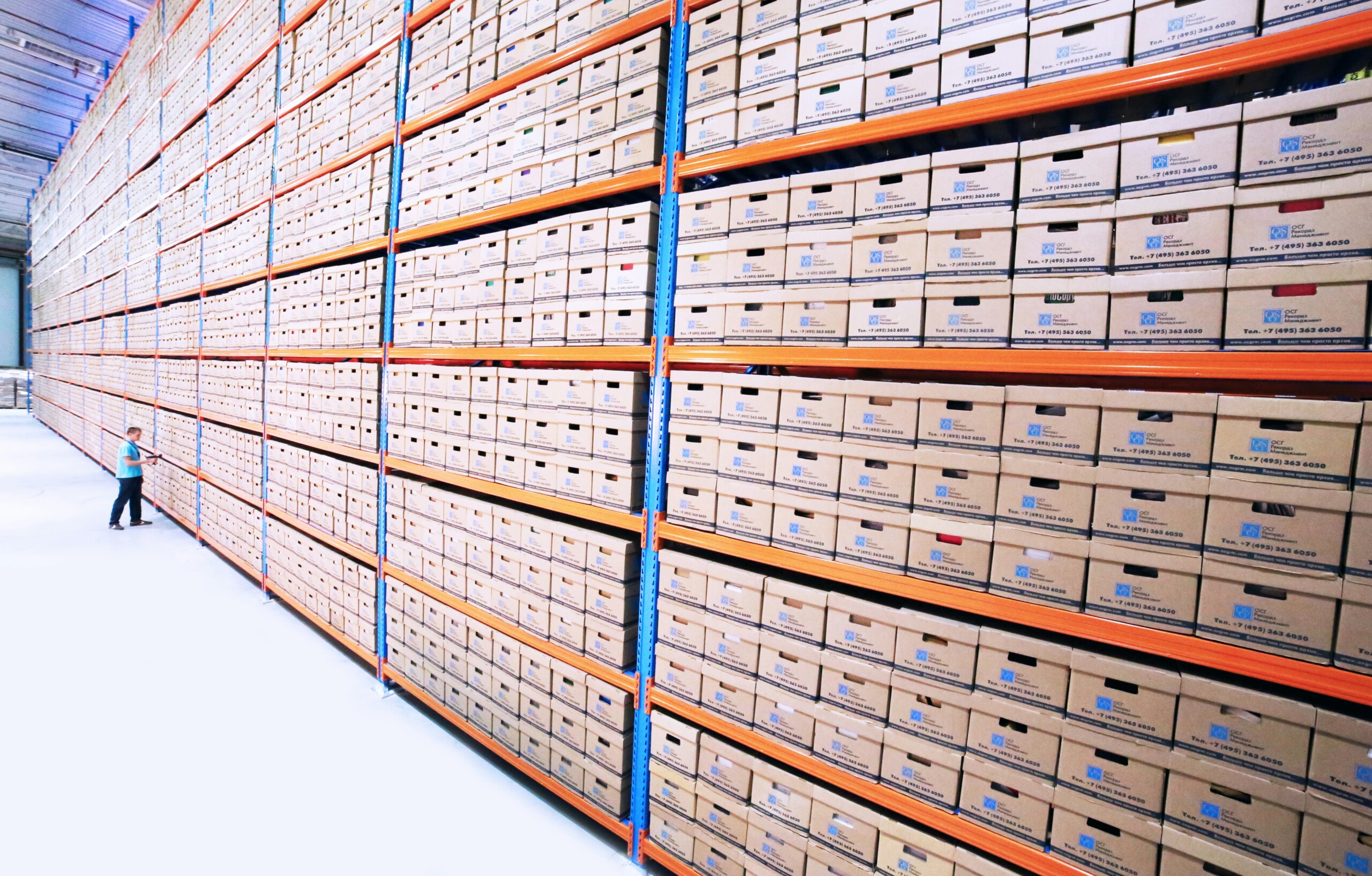How to Optimize Your Warehouse Management with RFID


Many retail and SME owners struggle with warehouse management. Tracking inventory and fulfilling orders can be overwhelming in warehouse management. Many companies seek ways to optimize their warehouse operations to boost productivity and cut costs. However, traditional methods of managing warehouses can be time-consuming and error-prone, but you can optimize your warehouse management with RFID and stand out from the competition.
This article covers all aspects of RFID, including warehouse management improvements. Define RFID and explain its operation. The lesson covers RFID systems and warehouse RFID tags. RFID’s warehouse management benefits follow. RFID boosts productivity, cuts labor costs, and tracks real-time inventory. RFID will also be discussed to improve WMS security and reduce theft.
RFID hardware selection is crucial. We will show how by reviewing the most important factors. We’ll review the best RFID companies worldwide and list the best US and Canadian RFID hardware companies. This aids RFID technology selection. Despite its difficulty, we will provide best practices and step-by-step instructions to implement your RFID tracking solution. We will address common issues with real-life examples and case studies.
RFID can automate data, inventory, and order fulfillment in warehouses. Discussing RFID software solutions and what to look for. We’ll conclude with warehouse RFID developments and how IoT and AI will improve RFID. This article should explain RFID and how it can improve warehouse operations.
Read this to improve warehouse management. It helps you decide wisely. Discuss how RFID can change your warehouse.
Warehouse Management
Warehouse management is unfamiliar to many small and medium-sized business owners. Managing inventory and fulfilling orders are just two of the challenges of warehouse management. Businesses always look for ways to run their warehouses more efficiently and cheaply. Regarding other technologies, Radio Frequency Identification (RFID) is very useful and flexible.
Benefits of Using RFID in Warehouse Management
Implementing RFID technology in your warehouse can significantly improve efficiency and accuracy. Here are some of the key benefits:
- Enhanced Inventory Accuracy: RFID systems can achieve near-perfect inventory accuracy. Traditional barcode systems require manual scanning, which is prone to human error. In contrast, RFID tags can be read automatically as items move through the warehouse, reducing the risk of mistakes.
- Real-Time Tracking and Visibility: With RFID, you can track the movement of goods in real time. This visibility allows for better decision-making and faster response times to changes in inventory levels or order statuses. For example, the system can automatically trigger a reorder if a product runs low.
- Improved Efficiency and Reduced Labor Costs: RFID technology automates many tasks previously done manually, such as inventory counts and order picking. This automation not only speeds up processes but also reduces labor costs. Employees can be reassigned to more value-added activities.
- Enhanced Security and Loss Prevention: RFID tags can help prevent theft and loss by accurately recording all inventory movements. If an item goes missing, the system can quickly identify where it was last scanned, helping to locate the lost item or identify potential theft.
- Integration with Existing Warehouse Management Systems: RFID systems can be integrated with existing Warehouse Management Systems (WMS) to provide a comprehensive solution for managing inventory, orders, and logistics. This integration allows for seamless data flow and improves operational efficiency.
Choosing the Right RFID Hardware
Selecting the appropriate RFID hardware is crucial for the success of your implementation. Here are some key considerations:
- Compatibility: Ensure your chosen RFID hardware is compatible with your existing systems and processes. This includes checking the compatibility of RFID readers, tags, and software.
- Environment: Consider the environment in which the RFID system will be used. Factors such as temperature, humidity, and the presence of metal or liquids can affect the performance of RFID tags.
- Read Range: The read range of RFID tags and readers is an important factor to consider. Passive tags typically have a shorter read range than active ones, so choose according to your needs.
- Durability: Choose RFID tags that are durable enough to withstand the conditions of your warehouse. For example, if you are tagging items stored outdoors, ensure the tags are weather-resistant.
Implementing RFID Tracking Solutions

Implementing RFID tracking solutions requires careful planning and execution. Here are the steps to ensure a successful implementation:
- Conduct a Needs Assessment: Identify your warehouse management’s specific needs and goals. This will help you determine the type of RFID system and components required.
- Choose the Right Equipment: Based on your needs assessment, select the appropriate RFID tags, readers, and software. Consider factors such as read range, durability, and compatibility.
- Plan the Layout: Design the layout of your RFID system within the warehouse. This includes determining the placement of RFID readers and antennas to ensure optimal coverage.
- Test the System: Conduct a pilot test before full-scale implementation to identify any potential issues and make necessary adjustments. This will help ensure a smooth rollout.
- Train Your Staff: Train your staff on how to use the RFID system. This includes training on how to handle RFID tags, operate readers, and use the software.
Top RFID Software Solutions
Leading RFID Software Companies
Selecting the right RFID software is as important as choosing the hardware. Leading RFID software companies provide comprehensive solutions that include inventory management, asset tracking, and data analytics. Notable companies include 44degNorth Technologies Inc., Avery Dennison, and Mojix, known for their advanced software platforms that integrate seamlessly with various RFID hardware.
Features to Look for in RFID Software
When evaluating RFID software, consider features such as real-time data processing, user-friendly interfaces, and robust reporting capabilities. Integration with existing warehouse management systems and scalability to accommodate future growth are also critical factors. Ensure the software supports multiple RFID tags and readers for maximum flexibility.
RFID Tracking Solutions for Warehouses
Types of RFID Tracking Solutions
RFID tracking solutions can vary widely based on the specific needs of a warehouse. Common types include item-level tracking, pallet tracking, and container tracking. Each type offers unique benefits and can be tailored to optimize warehouse operations.
How RFID Tracking Improves Operations
RFID tracking solutions enhance operational efficiency by providing accurate, real-time data on the location and status of inventory items. This information helps reduce misplacements, prevent theft, and streamline the picking and packing processes. Additionally, RFID tracking enables better inventory control and demand forecasting, leading to more efficient stock management.
Criteria for Choosing the Best RFID Provider
When selecting an RFID provider, consider the company’s reputation, product quality, and customer support. Look for providers with a proven track record of successful implementations and positive customer reviews. Additionally, evaluate their ability to offer scalable solutions that can grow with your business.
Challenges in RFID Implementation
Common Issues and How to Overcome Them
Implementing RFID technology can present several challenges, including high initial costs, integration complexities, and potential interference issues. To overcome these challenges, conduct thorough planning and testing, work with experienced vendors, and invest in quality hardware and software. Additionally, ensure proper training for your staff to maximize the benefits of RFID.
Cost vs. Benefits Analysis
While the initial investment in RFID technology can be significant, the long-term benefits often outweigh the costs. A comprehensive cost-benefit analysis can help you understand the potential ROI of RFID implementation. Factors such as improved inventory accuracy, reduced labor costs, and increased operational efficiency should be considered when evaluating the overall value of RFID.
Future Trends in RFID Technology for Warehouses

As technology continues to evolve, so does RFID. Here are some future trends to watch for in RFID technology for warehouses:
- Innovations in RFID Technology: New advancements in RFID technology are continually being developed, such as longer read ranges, smaller tags, and improved durability. These innovations will further enhance the capabilities of RFID systems.
- The Role of IoT and AI: The Internet of Things (IoT) and Artificial Intelligence (AI) are increasingly important in enhancing RFID capabilities. IoT devices can provide additional data points, while AI can analyze this data to generate insights and automate decision-making.
- Predictions for the Future of RFID in Warehouse Management: As RFID technology advances, its adoption in warehouse management is expected to grow. Future developments may include more seamless integration with other technologies, such as robotics and autonomous vehicles, further optimizing warehouse operations.
Maximizing ROI with RFID Technology
Strategies to Ensure Return on Investment
Implement strategies such as phased deployment, continuous training, and regular system audits to maximize the ROI of RFID technology. Phased deployment allows for gradual integration, minimizing disruptions and enabling better resource management. Continuous training ensures that staff remain proficient in using RFID systems, while regular audits help identify areas for improvement and ensure optimal performance.
Metrics to Measure RFID Effectiveness
Measuring the effectiveness of RFID implementation is crucial for understanding its impact on the business. Optimizing your warehouse management with RFID will always be the best investment.
Key metrics to track include inventory accuracy rates, order fulfillment times, labor cost savings, and overall operational efficiency. Analyzing these metrics regularly can help you make informed decisions and adjustments to maximize the benefits of RFID technology.
Regulatory and Compliance Considerations
Understanding Global RFID Standards
Compliance with global RFID standards is essential for ensuring the interoperability and reliability of your RFID systems. Familiarize yourself with standards such as EPCglobal, ISO/IEC, and GS1, which govern various aspects of RFID technology, including tag data formats, communication protocols, and performance requirements.
Ensuring Data Privacy and Security
Data privacy and security are critical considerations when implementing RFID technology. Ensure your RFID systems comply with relevant data protection regulations and employ robust security measures to protect sensitive information. Regularly update your software and conduct security audits to mitigate potential risks.
Integrating RFID with Other Technologies
RFID and Warehouse Management Systems (WMS)
Integrating RFID with Warehouse Management Systems (WMS) can significantly enhance the efficiency and accuracy of warehouse operations. RFID provides real-time data seamlessly integrated with WMS, enabling automated inventory tracking, improved stock management, and streamlined order processing.
Combining RFID with IoT and AI
The combination of RFID with IoT and AI offers powerful solutions for warehouse management. IoT enables real-time connectivity and data exchange, while AI enhances data analysis and decision-making capabilities. These technologies provide advanced tracking, monitoring, and optimization solutions that can transform warehouse operations.
Training Your Team on RFID Systems
Best Practices for RFID Training Programs
Effective training programs are essential to ensure your staff can effectively use RFID systems. Best practices include hands-on training sessions, regular refresher courses, and comprehensive training materials. Additionally, provide ongoing support to address any issues or questions.
Importance of Continuous Learning
Continuous learning is crucial for keeping up with advancements in RFID technology and best practices. Encourage your staff to stay informed about new developments and participate in relevant training programs. This commitment to continuous learning will help your team maximize the benefits of RFID technology and maintain high operational efficiency.
Conclusion
You can optimize your warehouse management with RFID. This technology helps employees track items in real-time, reduce errors, and stock up. Electromagnetic fields work better to automatically identify and track tags on objects without a direct line of sight. RFID’s main benefits are more accurate inventory, efficiency, real-time data access, and lower labor costs.
Before installing RFID in a warehouse, the needs must be determined, the right software and hardware chosen, the rollout planned, and the system tested. Choosing the right RFID tags and readers is crucial, as well as ensuring they work with existing systems, comparing costs and benefits, and training employees for a successful implementation.
RFID aids warehouse managers in many ways. It improves inventory accuracy, efficiency, data access, and labor costs. To use RFID in a warehouse, you must assess the needs, choose the right software and hardware, ensure it works with your existing systems, do a cost-benefit analysis, and train your staff.
Due to advances in tag and reader technology, RFID has a bright future despite high start-up costs and confusing integration. When combined with IoT and AI, RFID will transform warehouse management.
44degNorth provides expert advice, high-quality RFID solutions, and extensive support to improve your warehouse. It is a reliable warehouse management improvement partner with a track record of successful implementations and a priority for customer satisfaction.
Contact 44degNorth today to learn how their cutting-edge RFID solutions can boost productivity, accuracy, and revenue. To schedule an expert meeting, call or visit their website.
Call Now: +1 (647) 937-9080
Email Us: innovation@44degnorth.tech
FAQs
What are the initial costs of implementing RFID?
The initial costs of implementing RFID can vary widely depending on the size of your warehouse and the system’s complexity. Costs typically include RFID tags, readers, software, and installation. While the upfront investment can be significant, the long-term benefits often justify the expense.
How does RFID improve inventory accuracy?
RFID improves inventory accuracy by providing real-time, automated tracking of items. This reduces the chances of human error and ensures that inventory data is always up-to-date. Accurate inventory data leads to better stock management and decision-making.
What are the security concerns with RFID?
RFID security concerns include potential data breaches and unauthorized access to sensitive information. To mitigate these risks, implement robust security measures such as encryption, access controls, and regular security audits. Ensure that your RFID systems comply with relevant data protection regulations.
Can RFID be integrated with existing warehouse systems?
RFID can be integrated with warehouse systems such as Warehouse Management Systems (WMS) and Enterprise Resource Planning (ERP) systems. Integration enables seamless data exchange and enhances warehouse operations’ efficiency and accuracy.
What industries benefit most from RFID in warehouses?
Retail, manufacturing, logistics, and healthcare are among the industries that most benefit from RFID in warehouses. RFID technology enhances inventory management, improves supply chain visibility, and streamlines operations, making it valuable for various applications.
How to choose the right RFID hardware and software?
Choosing the right RFID hardware and software involves evaluating your specific operational needs, the providers’ quality and reputation, and the solutions’ scalability. Consider conducting a pilot program to test the technology and ensure it meets your requirements before full-scale implementation.
